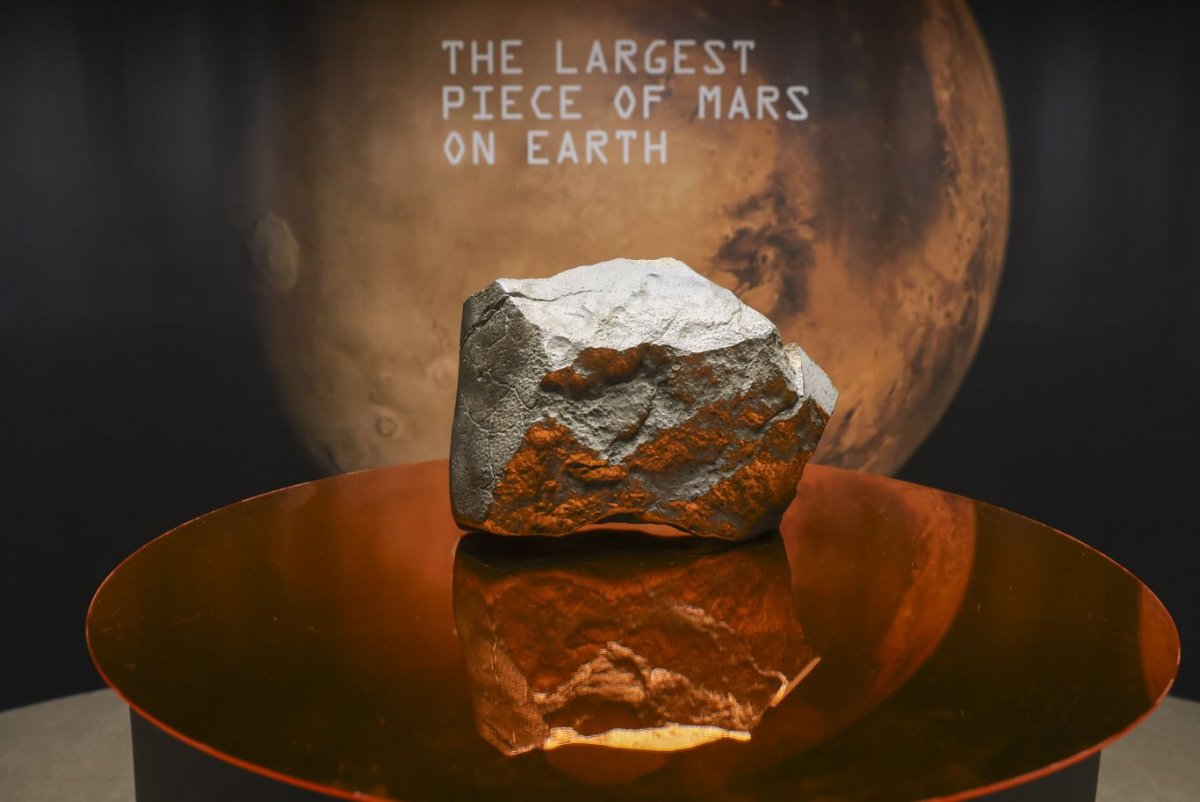The largest piece of Mars on Earth is seen on display as part of Sotheby’s Geek Week series of auctions in New York on Tuesday. Photo by Sarah Yenesel/EPA
July 17 (UPI) — A meteorite from Mars, the largest piece ever found on Earth, sold for $5.3 million to an anonymous bidder at a Sotheby’s auction in New York on Wednesday.
Bidding for the 54-pound, reddish-brown object began at $2 million, according to ABC News, and it went to $4.3 million plus $1 million in fees and taxes. The original owner wasn’t disclosed.
The rock, known as NWA 16788, is 70% larger than the next largest piece of Mars recovered, according to Sothebys. It is nearly 15 inches long.
“This is the largest piece of Mars on planet Earth,” Cassandra Hatton, vice chairwoman of the science and natural history at Sotheby’s, said in a video posted online. “Remember that approximately 70% of Earth’s surface is covered in water. So we’re incredibly lucky that this landed on dry land instead of the ocean where we could actually find it.”
The auction house said the rock broke from Mars after an asteroid strike and went more than 140 million miles to Earth.
The piece crashed in the Saharan Desert in Nigeria’s Agadez region. It was discovered by a meteorite hunter in November 2023, according to Sotheby’s.
Martian meteorites make up 400 of the 77,000 officially recognized meteorites, according to the auction house.
Testing determined it is an olivine-gabbroic shergottite, which is a relatively new type of meteorite from Mars. That material is also found on the Earth’s upper crust.
The rocket is composed of 21.2% of a glass known as maskelynite, which was produced when an asteroid struck the Martian surface and forced the object off the planet’s surface.
Only about 19 craters are big enough to produce meteorites on Earth.
“This isn’t just a miraculous find, but a massive data set that can help us unlock the secrets of our neighbor, the red planet,” Hatton said.
The rock was on public display at the Italian Space Agency in Rome and in a private gallery in Arezzo, Tuscany, in 2024.
“It would be a shame if it disappeared into the vault of an oligarch,” Steve Brusatte, professor of paleontology and evolution at Scotland’s University of Edinburgh, told CNN before the auction.
The Martian rock was part of Geek Week with sales of items related to natural history, science and technology history, and space exploration.
